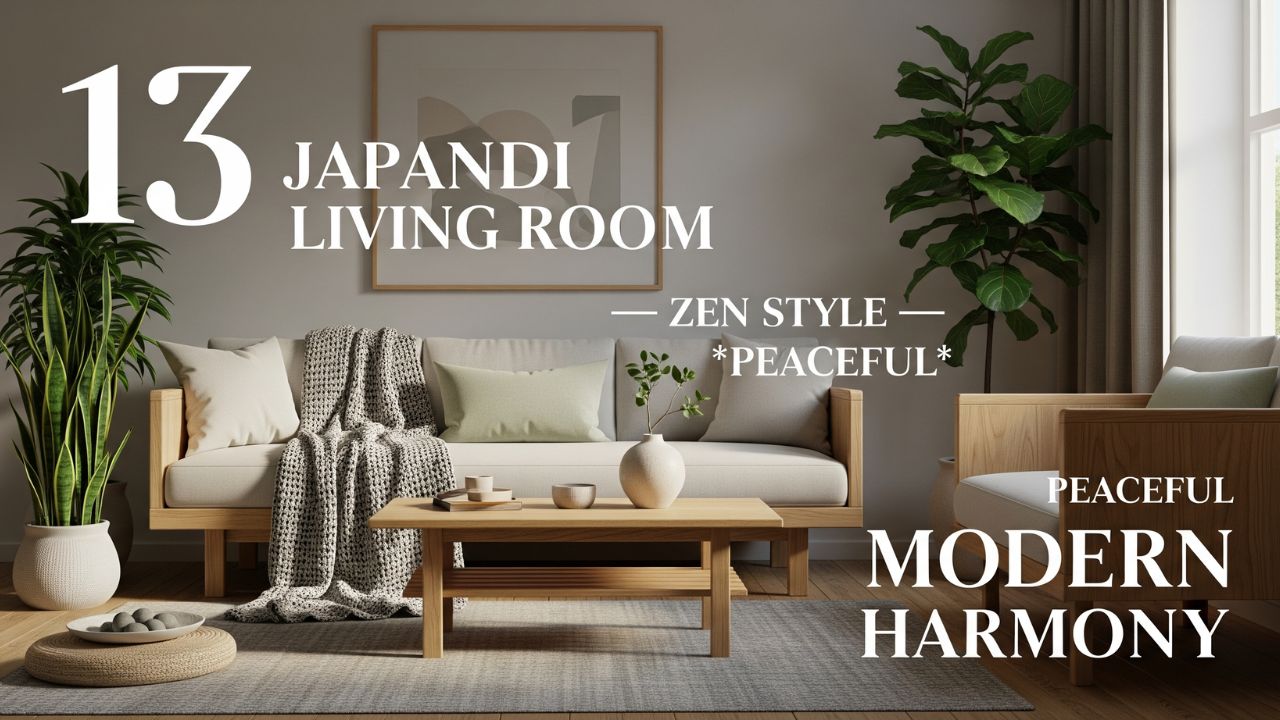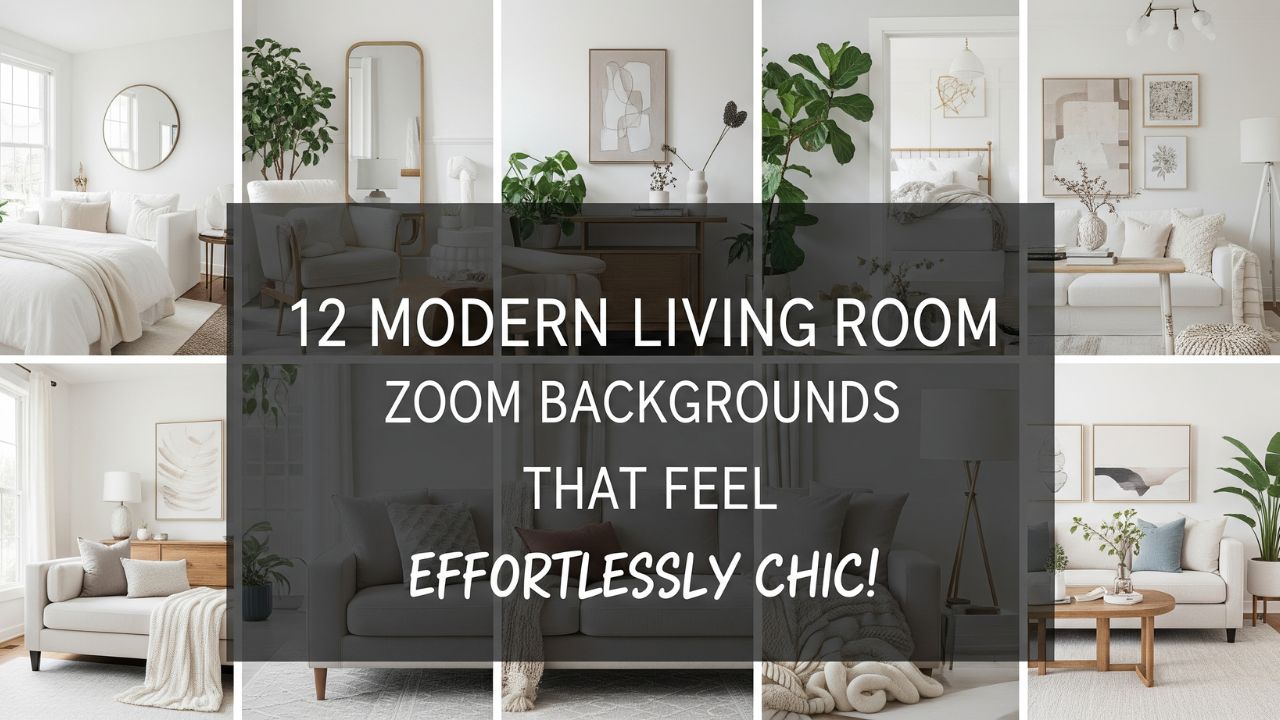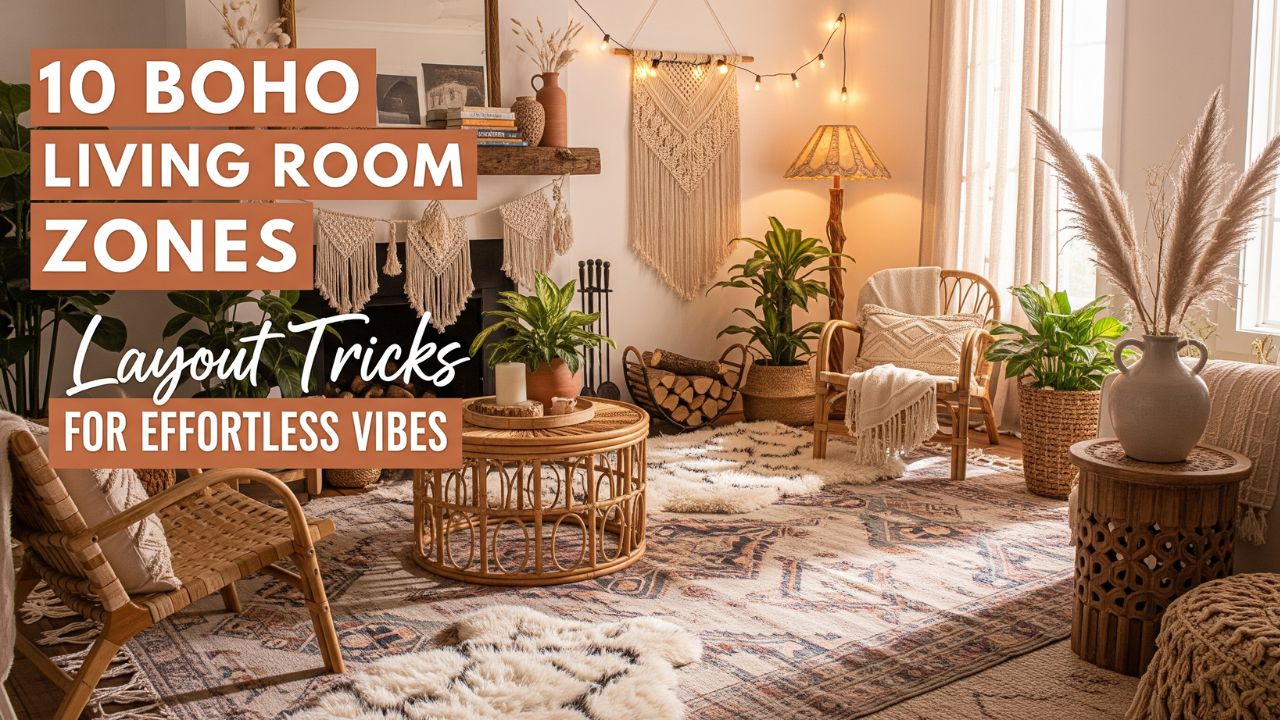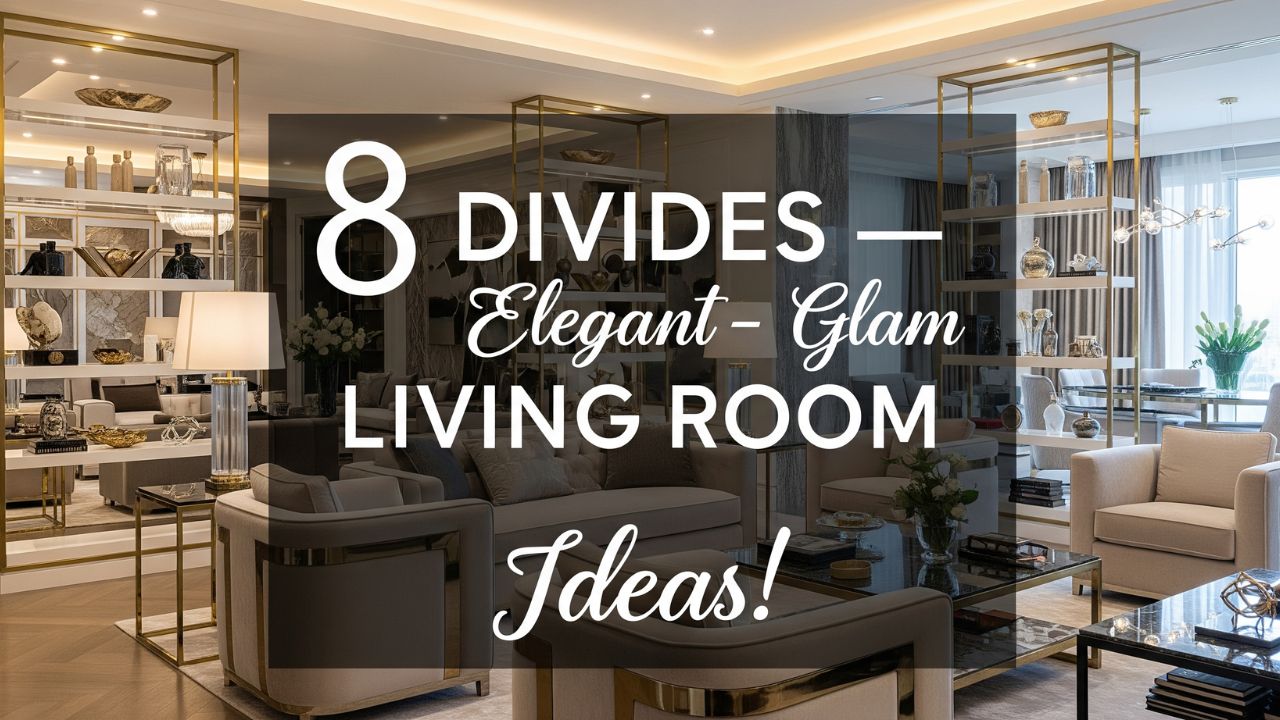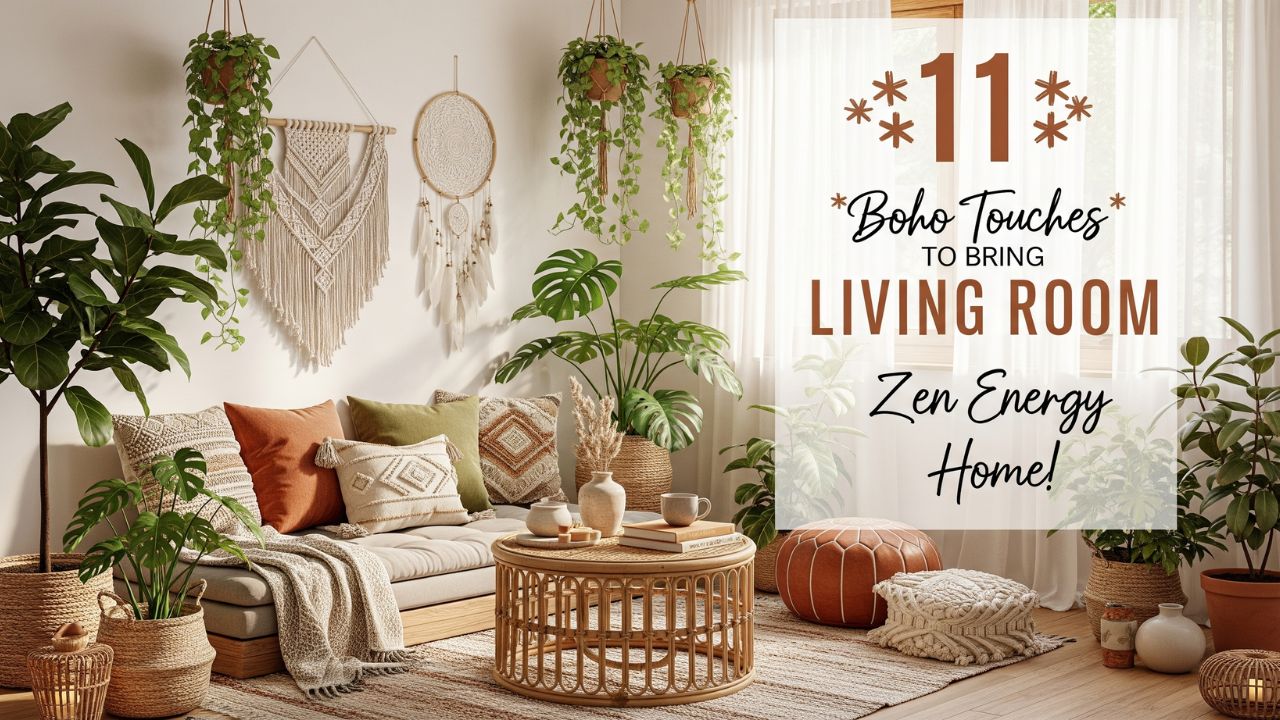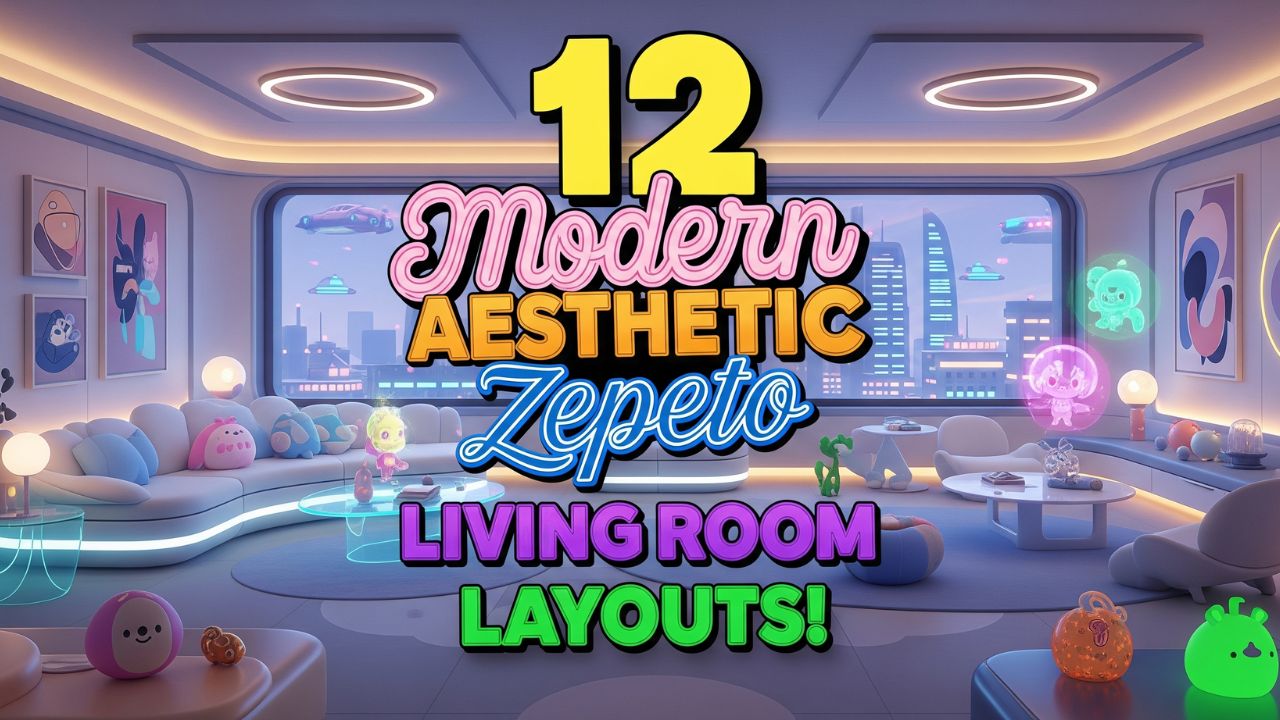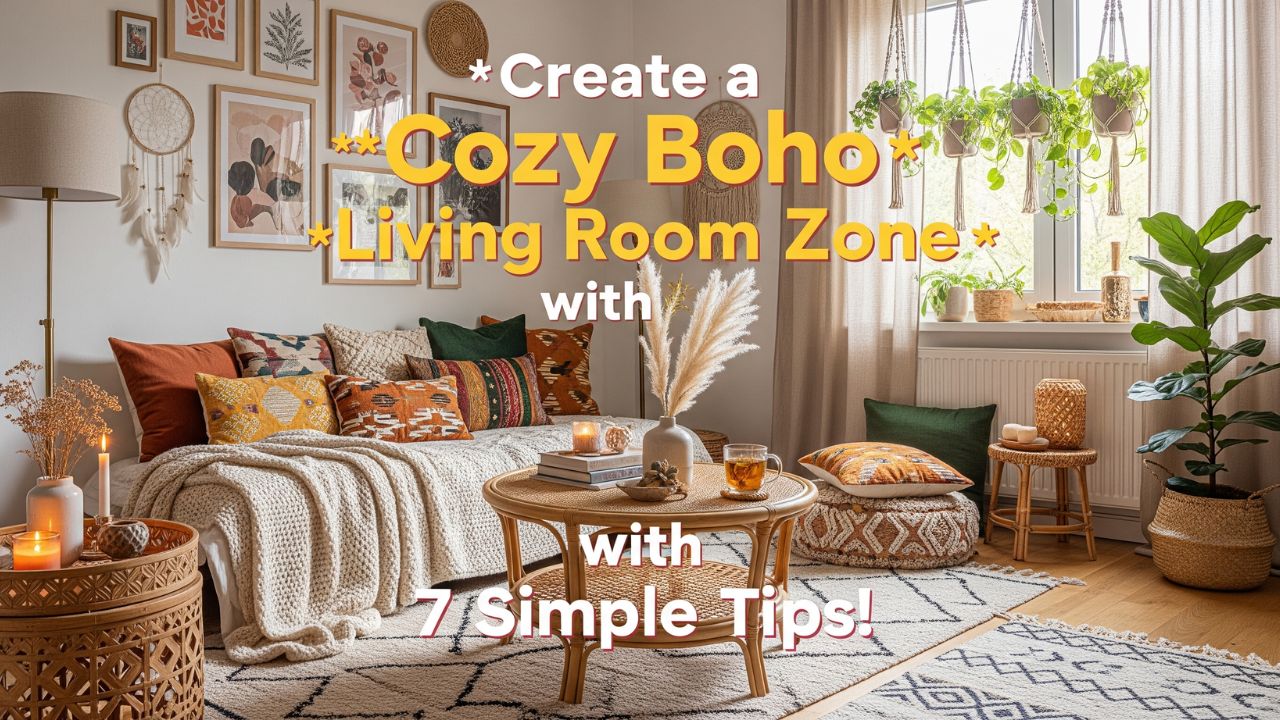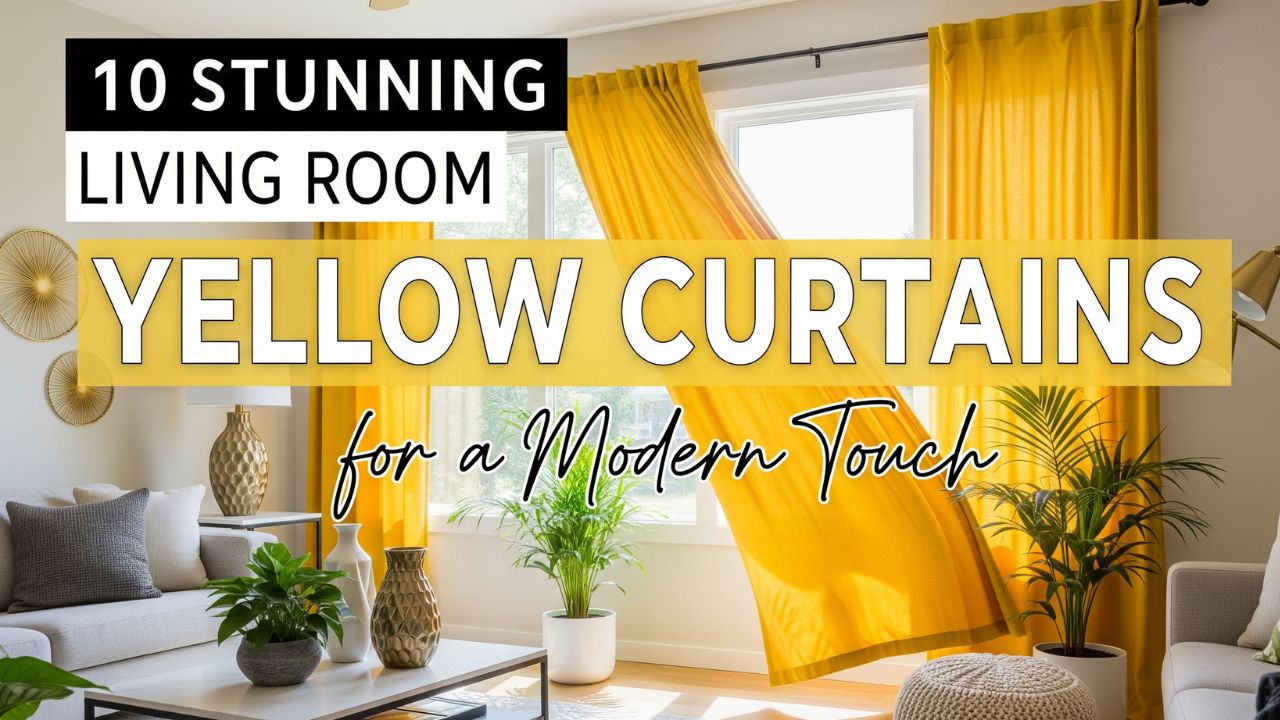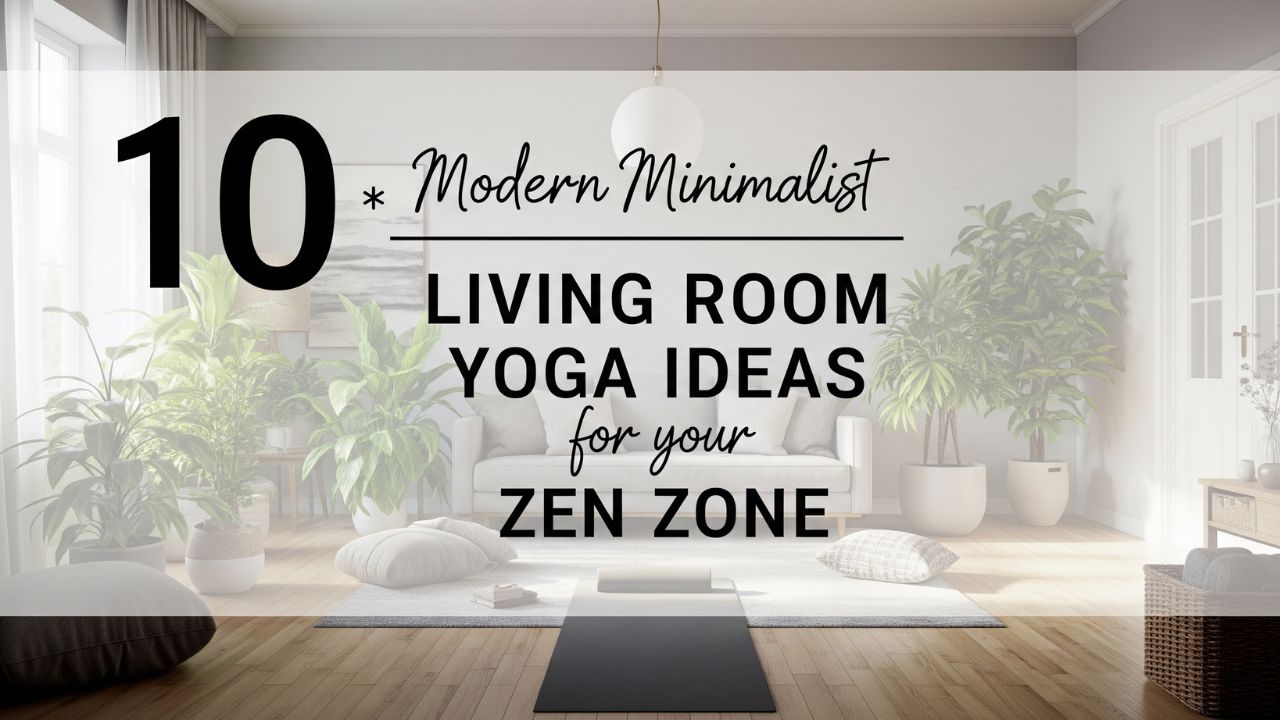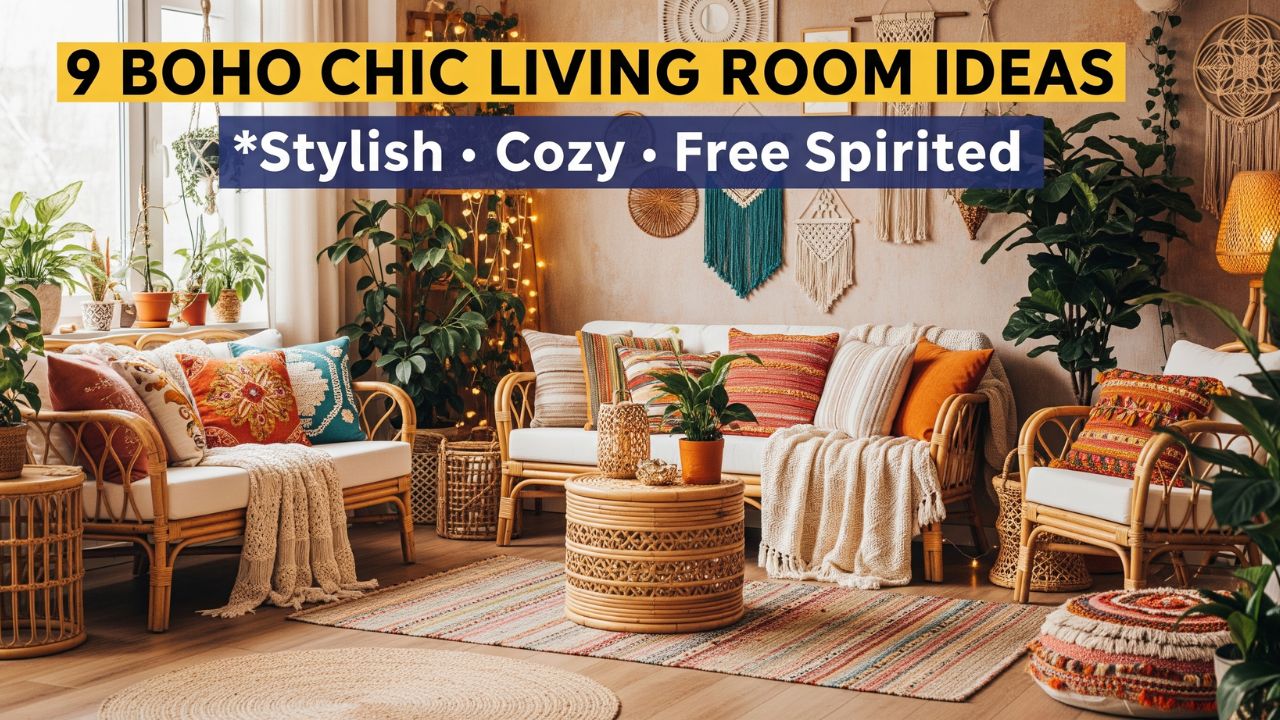When it comes to interior design, there’s something undeniably alluring about Scandinavian living rooms. Known for their minimalist aesthetic, warm yet functional design, and use of natural materials, these spaces evoke a sense of calm and order.
Scandinavian design is much more than just a trend – it’s a philosophy that focuses on simplicity, comfort, and functionality. If you’ve ever walked into a room and instantly felt at peace, chances are it was inspired by Scandinavian principles.
But what exactly makes these spaces so special? Why does the combination of neutral tones, clean lines, and organic elements leave such a lasting impression?
In this post, we’ll explore 12 Scandinavian living room layouts that define simplicity and explain why they’ve become a global design obsession.
Whether you’re looking to refresh your living space or just admire the beauty of Scandinavian interiors, this guide will show you how easy it can be to bring a little piece of Nordic calm into your home.
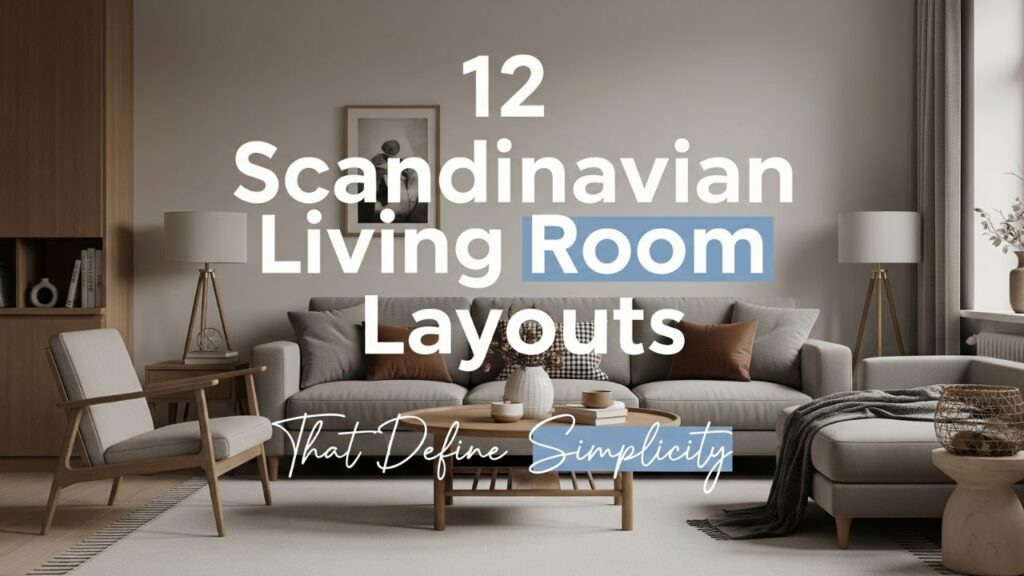
Table of Contents
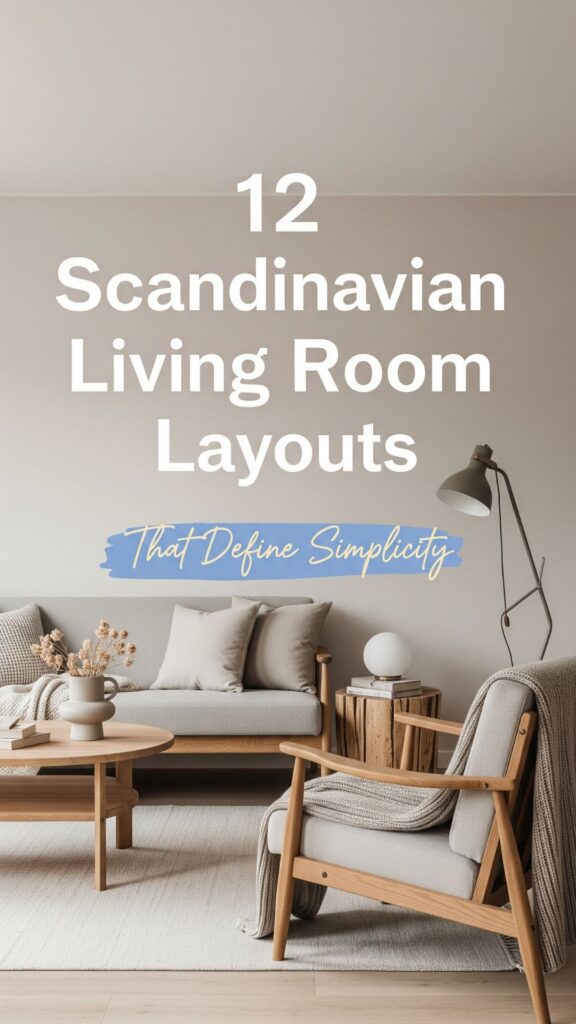
12 Scandinavian Living Room Layouts
1. The Open and Airy Layout
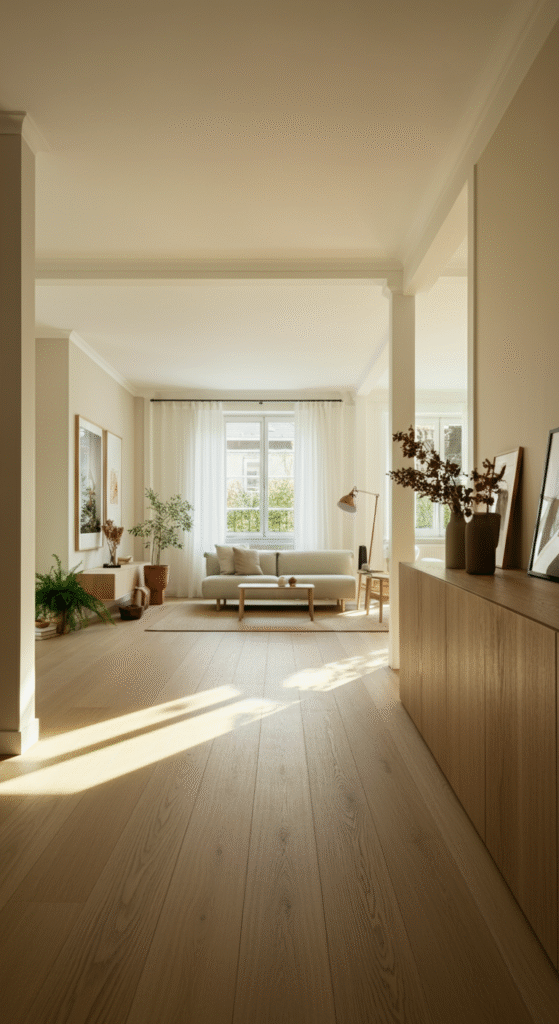
Scandinavian interiors thrive on openness, with a strong focus on making the most out of natural light. The open layout, with fewer walls and partitions, allows for a seamless flow between spaces. Large windows, typically dressed with light, airy curtains, help flood the room with daylight, creating an inviting and spacious feel.
Do you know?
The Scandinavian design philosophy is deeply rooted in the concept of ‘hygge,’ a Danish term that refers to creating a cozy, comfortable atmosphere. Natural light plays a huge role in this, especially in the darker months, where it’s important to make the most of daylight.
A living room with this type of layout allows each element – be it furniture, decor, or architectural features – to stand out without overcrowding the space. The combination of white walls, natural wood accents, and minimalist furniture encourages a sense of tranquility.
2. Neutral Palette with Natural Textures
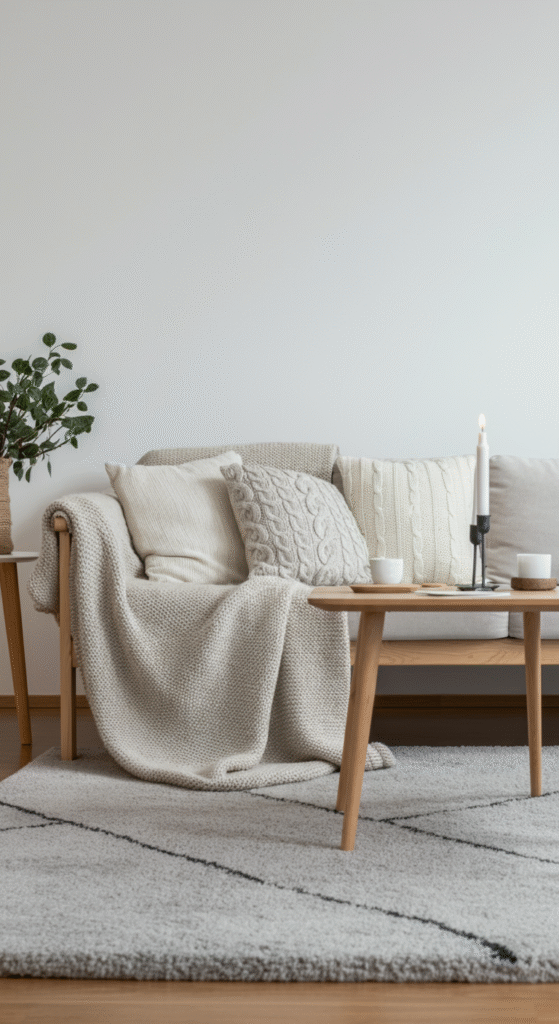
In Scandinavian living rooms, the focus is on calm, neutral colors – whites, grays, and beige dominate the walls and furniture. These muted shades are often contrasted with the warmth of natural materials like wood, leather, and wool, creating a balanced and inviting environment.
Interesting Fact:
The Scandinavian approach to color stems from the long, dark winters in the region. Pale tones reflect the limited light, while natural materials like wood bring warmth to a space. It’s all about making the most of what little daylight there is.
Adding plants, whether hanging or in pots, further enhances the serene ambiance, adding a touch of green and life to the room without overwhelming the space. Natural fibers, like wool or jute rugs, can add texture, keeping the look grounded while offering comfort underfoot.
3. The Cozy Minimalist Approach
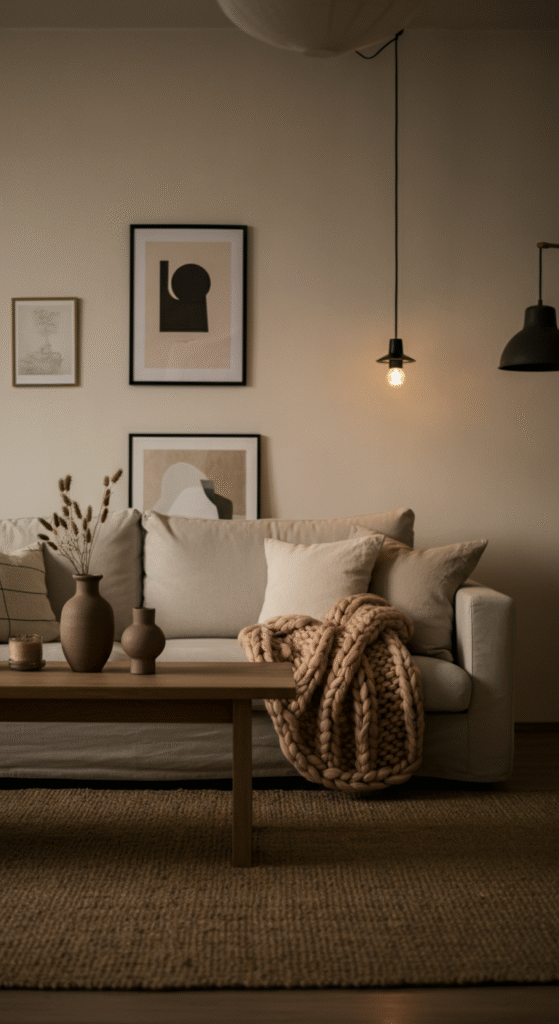
One of the cornerstones of Scandinavian design is simplicity. However, that doesn’t mean sacrificing comfort. In fact, Scandinavian living rooms often boast a minimalist design that doesn’t compromise on warmth. The cozy minimalist approach balances clean lines with soft, plush textures that invite you to unwind and relax.
The sofa is often the focal point of the room, with neutral-toned cushions, knitted throws, and a few select pieces of art or decor. Simple yet functional furniture, such as sleek coffee tables or open shelving, creates a clutter-free environment where everything serves a purpose.
Myth Busted:
A common misconception is that Scandinavian design is cold and impersonal. While it emphasizes minimalism, it’s anything but sterile. The key is to integrate warmth, comfort, and a sense of homeliness with carefully chosen pieces.
4. The Compact Scandinavian Living Room
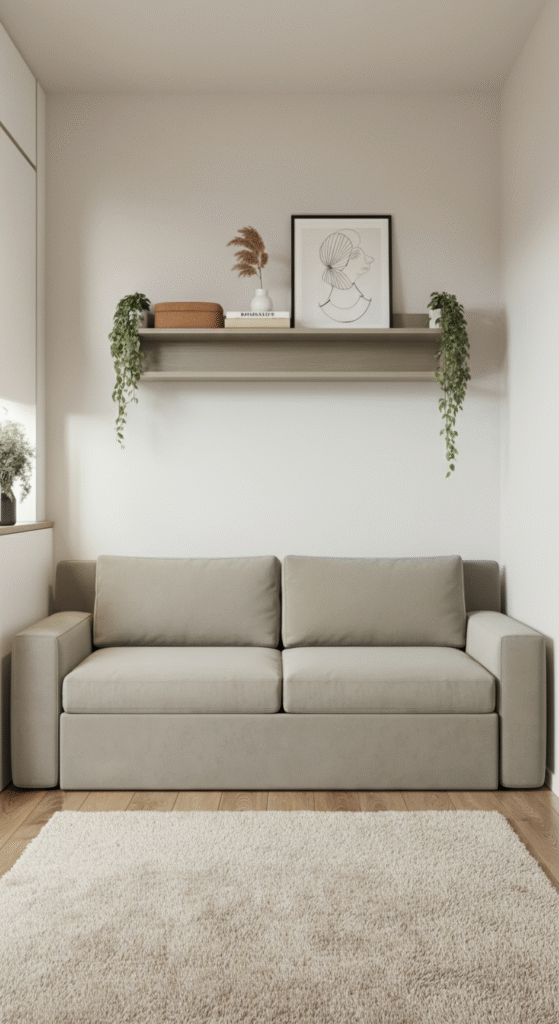
Small spaces? No problem. Scandinavian design is all about making the most out of any given area, no matter how small. A compact living room layout can still feel open, airy, and functional by strategically arranging furniture and using light, neutral tones.
One common trick in small Scandinavian living rooms is using multi-functional furniture. For example, a sofa that doubles as a guest bed or storage solutions that are stylish yet practical. The key is to keep things uncluttered and streamlined, allowing the room to feel spacious despite its size.
Do you know?
In Scandinavian countries, homes are often smaller due to the high cost of living. As a result, the design ethos revolves around maximizing functionality without compromising on style or comfort.
5. Scandinavian Rustic Charm
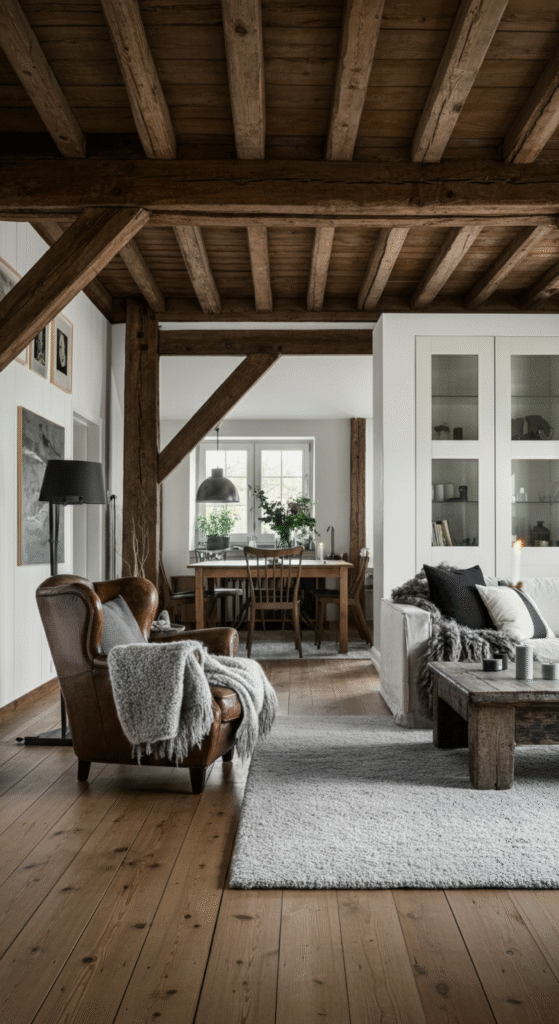
While Scandinavian design is often associated with sleek modernity, it also embraces rustic elements. A rustic Scandinavian living room combines traditional craftsmanship with modern sensibilities, creating a space that feels grounded in both history and the present.
Exposed wood beams, wooden floors, and vintage pieces can coexist with modern furniture, adding character and warmth to the room. A rustic design doesn’t shy away from imperfections – the beauty lies in the natural textures and the craftsmanship of the materials.
Interesting Fact:
The use of rustic elements in Scandinavian interiors harkens back to the region’s agricultural roots. The idea of bringing the outdoors inside is a way of celebrating nature’s beauty and its connection to everyday life.
6. The Industrial Scandinavian Living Room
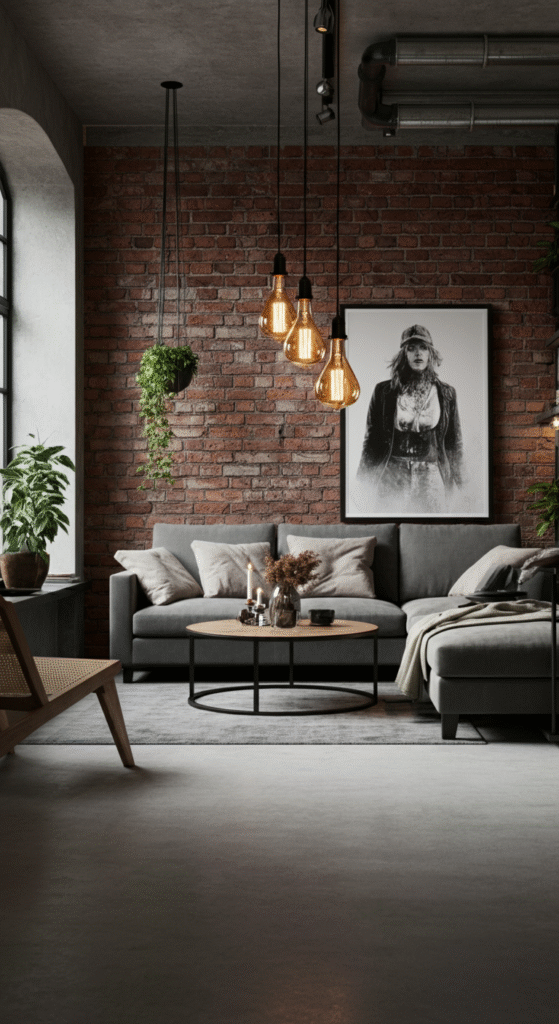
Scandinavian design has a love affair with industrial elements. The raw beauty of exposed brick, steel beams, and concrete floors can work seamlessly with the soft and minimalist elements typical of Scandinavian interiors. The key is to balance these harsher materials with softer furnishings to avoid the space feeling too stark.
The contrast between industrial and soft elements creates a dynamic look, giving the room an edgier, more urban feel. A few well-chosen metal or glass pieces, such as light fixtures or furniture frames, add a touch of modern industrial style without overshadowing the warmth of the space.
7. Scandinavian White and Bright Layout
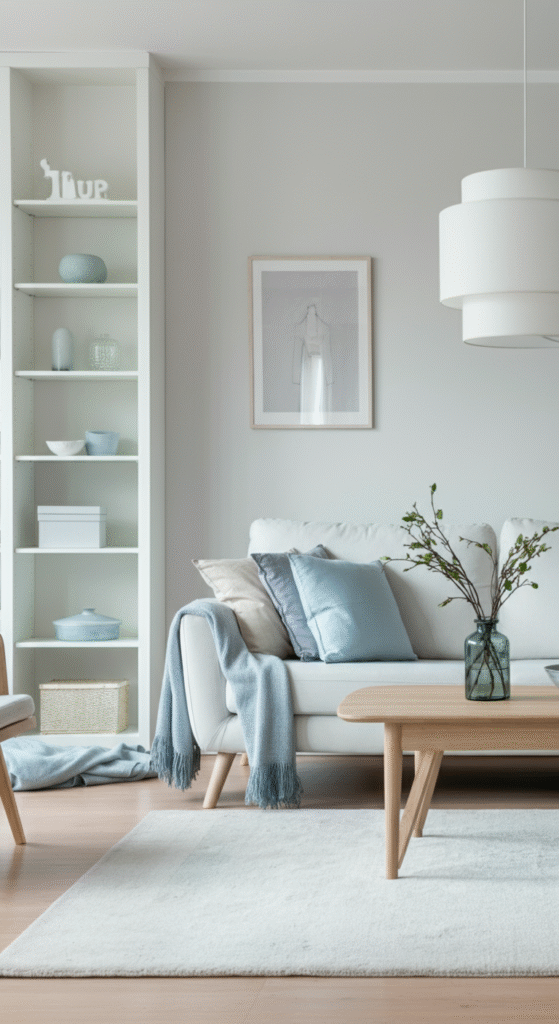
The signature feature of Scandinavian design is the use of white – from walls to furniture, it’s a color that amplifies natural light and creates an open, airy environment. White acts as a blank canvas, making the space feel more expansive and inviting.
Pairing white with light woods and subtle accent colors, such as soft blues or muted pastels, creates a serene and harmonious space. Simple furniture with clean lines complements the minimalist aesthetic, and accessories are kept to a minimum to avoid visual clutter.
Do you know?
In Sweden, white interiors are often seen as a reflection of the country’s heritage of simplicity and purity. It’s not just a color choice – it’s an expression of the country’s culture and way of life.
8. Layered Textures and Tactile Comfort
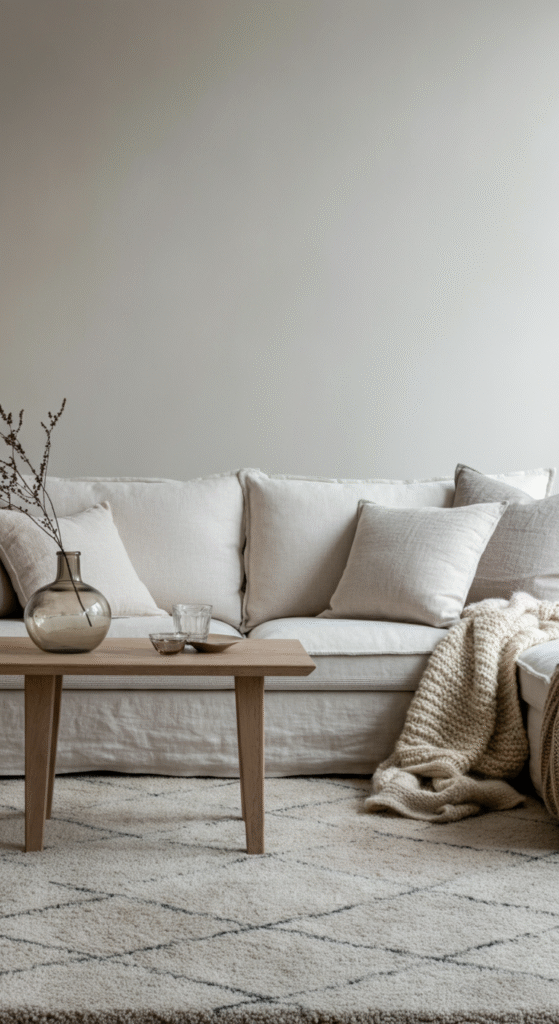
While Scandinavian living rooms are known for their minimalist designs, they also focus heavily on comfort. Layering textures through rugs, cushions, throws, and upholstery adds depth and warmth to the space. A mix of materials like linen, cotton, and leather, paired with natural wood accents, creates a tactile experience that encourages you to relax.
By combining different textures, you can create a cozy, inviting atmosphere that doesn’t feel overstuffed. Whether it’s a chunky knitted throw or a soft woolen rug, tactile comfort is key in Scandinavian interiors.
9. The Scandinavian Modern Farmhouse Look
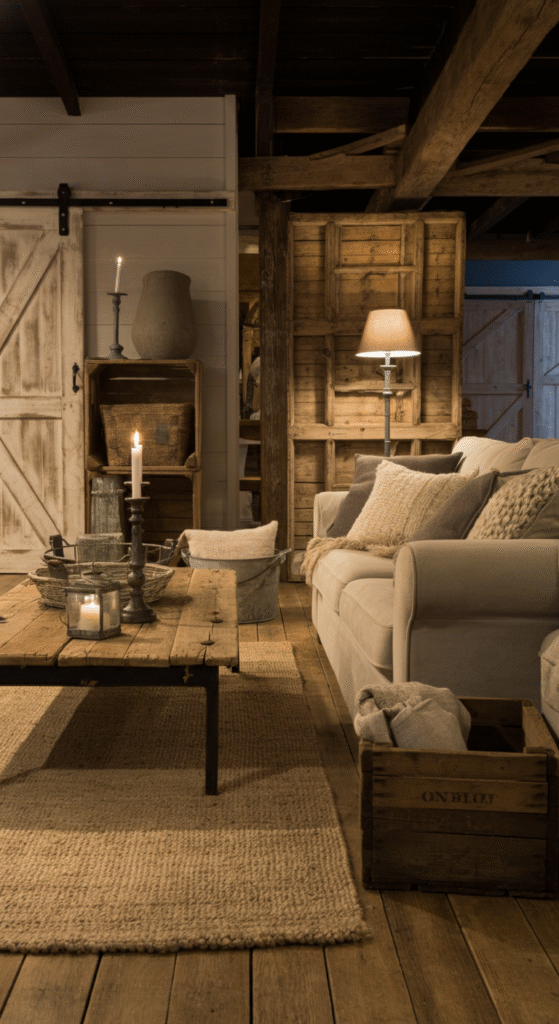
This layout takes inspiration from the charm of farmhouse living and adds a modern Scandinavian twist. The combination of clean, modern lines with rustic elements like barn-style doors, wooden accents, and open shelving creates a cozy, functional living space.
The key to pulling off a Scandinavian farmhouse look is balance. While you can introduce farmhouse elements, they should be complemented by the minimalist lines and neutral palette typical of Scandinavian design.
Interesting Fact:
The modern farmhouse aesthetic has its roots in the Nordic regions, where functional, humble designs have long been favored. Over time, this style evolved into a globally recognized aesthetic, blending rustic charm with modern sensibilities.
10. The Monochrome Scandinavian Layout
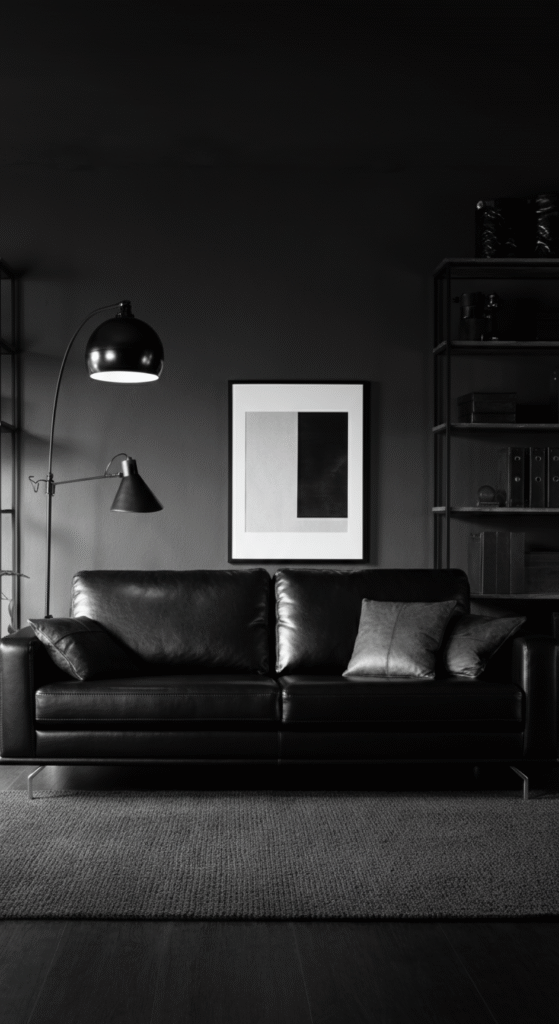
If you love bold statements, the monochrome Scandinavian living room layout might be your perfect fit. This design sticks primarily to black, white, and gray tones, creating a high-contrast, modern, and edgy look.
With a monochrome layout, you can introduce accents in the form of black metal light fixtures, dark leather furniture, and stark white walls. The lack of color allows other design elements, such as architectural features or furniture pieces, to really stand out.
11. Boho Scandinavian Fusion
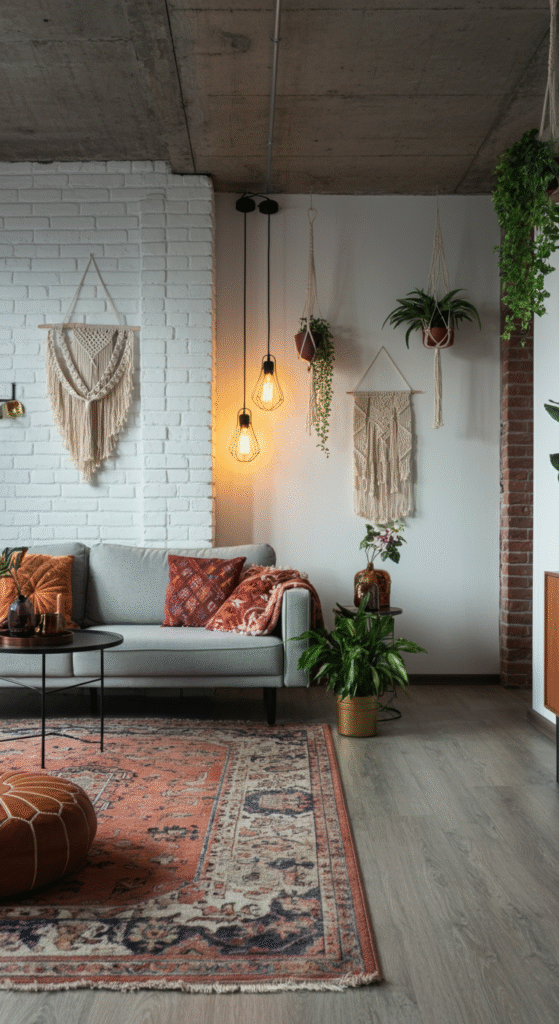
For those who enjoy a bit of personality and eclectic flair, a Boho Scandinavian fusion layout blends the best of both worlds. The bohemian style, known for its vibrant colors and mix of patterns, is softened by the clean, neutral Scandinavian base.
Incorporating a mix of colorful textiles, vintage furniture, and lush plants creates a cozy, lived-in feel. It’s the perfect balance between Scandinavian minimalism and the playful energy of boho chic.
12. Scandinavian Coastal Living Room
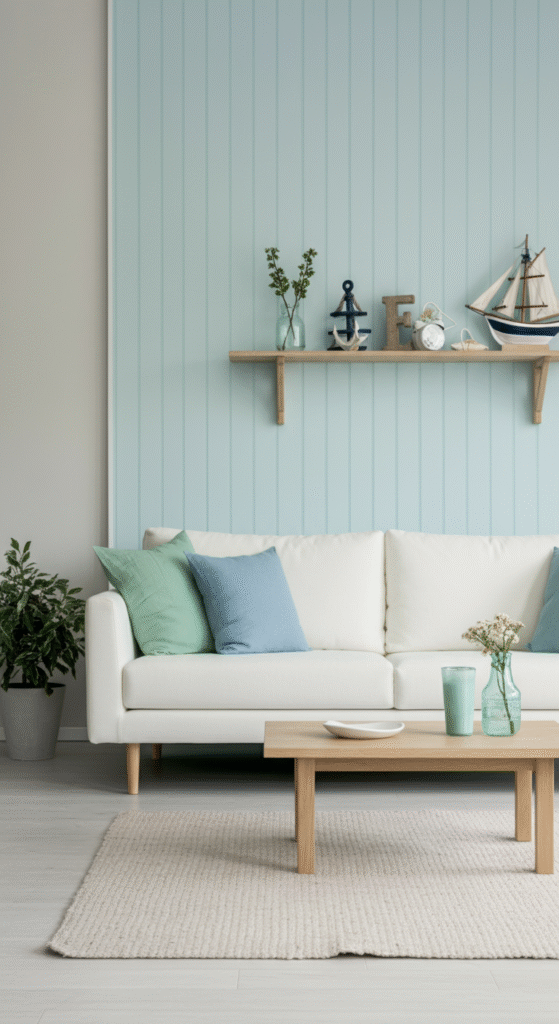
Inspired by the coastlines of Nordic countries, this layout evokes a fresh, airy vibe. Light blues, whites, and soft greens dominate the color scheme, while the furnishings remain functional and stylish.
Wooden furniture, paired with woven textiles and natural accents, creates a soothing space that mimics the tranquility of the sea. This layout is perfect for those who want a calm and serene living room that feels connected to nature.
Conclusion
Scandinavian living rooms are timeless and versatile, offering a balance of beauty, function, and comfort. Whether you prefer an open and airy layout or the warmth of rustic accents, Scandinavian design can be adapted to fit any lifestyle. Its minimalist approach doesn’t mean sacrificing style; instead, it celebrates simplicity, functionality, and the beauty of natural materials.
From the cozy minimalist designs to the more eclectic boho-scandi mixes, there’s a Scandinavian layout that can suit every personality. These spaces invite peace, serenity, and functionality, all while embracing the clean lines and natural beauty that have made Scandinavian design a global trend.
Ready to transform your living room? Start by incorporating just a few elements from these layouts and see how the calm, simple elegance of Scandinavian interiors can transform your home.
Frequently Asked Questions (FAQs)
What makes Scandinavian living rooms different from other design styles?
Scandinavian living rooms are characterized by their minimalist aesthetic, functional furniture, and use of natural materials like wood and wool. The primary focus is on simplicity, light, and comfort. The style embraces a neutral color palette, clean lines, and practical yet stylish decor. It is designed to make the most of limited space, creating a serene, calming atmosphere.
How can I incorporate Scandinavian design into a small living room?
To incorporate Scandinavian design in a small living room, focus on maximizing natural light, using neutral colors, and choosing functional, space-saving furniture. Multi-purpose furniture like storage ottomans or sofa beds is a great way to make the most of limited space. Keep the layout open and airy, avoiding clutter, and use light woods and soft textiles to add warmth.
Is Scandinavian design suitable for families with children or pets?
Yes, Scandinavian design is quite practical for families with children and pets. The focus on functional furniture means that items are often built to be durable and easy to maintain. You can opt for slipcovers on sofas, washable rugs, and sturdy furniture that can withstand the wear and tear of family life. The minimalist approach also keeps things simple, making it easy to keep your home organized.
Can I mix Scandinavian design with other styles?
Absolutely! Scandinavian design is versatile and can be easily mixed with other styles. For example, you can combine Scandinavian minimalism with the warmth of a rustic farmhouse design or add bohemian elements for a more eclectic look. The key is to maintain the balance of clean lines and functional pieces, while introducing elements from other styles that complement the Scandinavian aesthetic.
Is it necessary to use all white in Scandinavian living room design?
No, it is not necessary to use all white. While white is a prominent color in Scandinavian design for its light-reflecting properties, you can also incorporate other neutral tones like soft grays, beige, or pastel hues. The goal is to maintain a light, airy feel, but you can add warmth and personality through the use of wooden elements, textiles, and even a few bold accents if desired.
